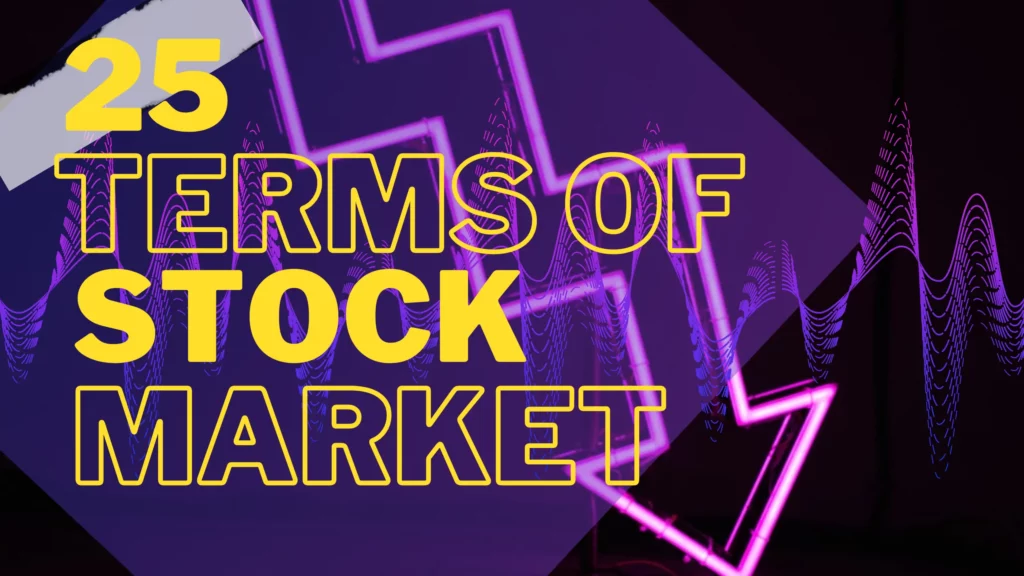
Many people find investing intimidating because there are so many options available and it can be challenging to choose which investments are best for your account. This article outlines why you might wish to include each of the 10 most popular investment categories, which range from stocks to cryptocurrencies, in your portfolio. Finding a financial advisor to serve as your guide and assist you in determining which investments will best help you achieve your financial objectives may make sense if you are serious about investing.
Stocks
The most well-known and straightforward sort of investing is likely stocks, usually referred to as shares or equities. Purchasing stock entitles you to ownership in a publicly listed corporation. You may purchase stock in several of the greatest corporations in the nation, including General Motors, Apple, and Facebook.
How to make money: When you purchase a stock, you anticipate that the price will increase, allowing you to afterward sell it for a profit. Of course, there is a chance that the stock’s price could drop, in which case you would lose money.
Bonds
In essence, you are lending money to an organization when you purchase a bond. Typically, this would be a company or a government agency. Municipal bonds are issued by local governments, whereas corporate bonds are issued by businesses. Investors can purchase Treasury bonds, notes, and bills, which are all debt securities issued by the US Treasury.
How to make money: The lender receives interest payments while the loan is being made. You get your principal back when the bond matures, which means you’ve held it for the time period specified in the contract.
Bonds normally have a lower rate of return than stocks, but they also often carry less risk. Of course, there is still some danger involved. Both the government and the corporation from which you purchase bonds are subject to failure. But Treasury bonds, notes, and bills are regarded as very secure assets.
Mutual Funds
A mutual fund is a collection of numerous investors’ money that is broadly invested in a variety of businesses. Both actively and passively managed mutual funds are available. A fund manager who chooses which securities to invest investor money in runs an actively managed fund. By selecting investments that will outperform such an index, fund managers frequently attempt to beat the benchmark market index. An index fund, usually referred to as passive management simply follows a significant stock market index like the Dow Jones Industrial Average or the S&P 500. Mutual funds have access to a wide range of instruments, including derivatives, stocks, bonds, commodities, and currencies.
How to Make Money: When the value of the stocks, bonds, and other packaged securities that the mutual fund invests in rises, investors profit from the mutual fund. The managing company and discount brokerages both offer direct purchasing options for them. But keep in mind that there is frequently a minimum investment and that there is an annual charge.
Exchange-Traded Funds (ETFs)
Mutual funds and exchange-traded funds (ETFs) both consist of a group of investments that follow a market index. Shares in ETFs are bought and sold on the stock markets, as opposed to mutual funds, which must be purchased through a fund provider. While mutual funds’ value is merely the net asset value of your investments, which is determined at the conclusion of each trading session, their price changes throughout the trading day.
How to profit: Because ETFs are more diversified than individual equities, they are frequently suggested to novice investors. By selecting an ETF that follows a broad index, you can reduce risk even further. A similar to mutual funds, you can profit from an ETF by selling it as its value increases.
Certificates of Deposit (CDs)
An extremely low-risk investment is a certificate of deposit (CD). You loan money to a bank for a certain period of time in a specific quantity. You receive your investment back along with a predetermined amount of interest once that time period has passed. Your interest rate increases as the loan term lengthen.
How to Make Money: If you want to save money over the long term, CDs are an excellent choice. They are FDIC-insured up to $250,000, which would protect your funds even if your bank were to fail, so there are no significant dangers. Nevertheless, you must be certain that you won’t require the funds during the CD’s term because early withdrawals are subject to severe penalties.
Retirement Plans
Retirement plans come in several forms. Employer-sponsored workplace retirement plans include 401(k) and 403(b) plans. If you don’t have access to a retirement plan, you could open a standard or Roth individual retirement account (IRA).
Retirement plans aren’t a distinct class of investments per se, but rather a means of purchasing stocks, bonds, and funds in two tax-advantaged ways. The first one allows you to invest pretax money (as with a traditional IRA). The second one lets you withdraw money without having to pay taxes on it. The investments’ risks are the same as if you had purchased them outside of a retirement plan.
Options
An option is a little more complicated method of stock acquisition. You purchase the right to buy or sell an asset at a specific price and at a specific time when you purchase an option. Options come in two flavors: call options, which are used to purchase assets, and put options, which are used to sell options.
How to make money: As an investor, you fix the price of a stock in anticipation that its value will increase. The stock could also lose money, which is the risk associated with an option. Thus, you lose the money from the contract if the stock’s price falls from when it was first purchased. Options are a sophisticated investing strategy, thus retail investors should use caution while employing them.
Annuities
A lot of people include annuities in their retirement savings strategy. When you purchase an annuity, you do it in exchange for a policy of insurance and regular payments.
There are several different types of annuities. They might exist forever or just for a certain amount of time. They may ask for a single upfront payment or reoccurring premium payments. They could have a loose connection to the stock market or they could just be an insurance policy without any connection to the markets. Payments can be made right now or put off until a certain time. They could be constant or changeable.
How to make money: Annuities can ensure an additional source of retirement income. They aren’t high-growth, but they are quite a low risk. Investors usually treat them as a beneficial addition to their retirement savings as opposed to a primary source of money.
Cryptocurrencies
Cryptocurrencies are a relatively new form of investment. The most well-known cryptocurrency is Bitcoin, but there are a tonne of others as well, including Litecoin and Ethereum. These are virtual currencies that are not supported by the government. On cryptocurrency exchanges, you can purchase and sell them. You can even make purchases with some merchants.
How to make money: Because of their frequent and erratic changes, investments in cryptocurrencies are particularly risky. But some investors use them as alternatives to stocks and bonds to diversify their portfolios. They are available on cryptocurrency exchanges.
Commodities
Physical goods that you can invest in are known as commodities. They are widespread in futures markets where producers and commercial buyers, or experts, try to protect their financial interest in the commodities.
Before making an investment in futures, retail investors should make sure they fully understand them. That’s in part because investing in commodities entails a risk that unexpected developments could cause a commodity’s price to change suddenly and abruptly in either way. Politics, for instance, can significantly alter the price of something like oil, and the environment can affect the price of agricultural items.
The four major categories of commodities are broken down as follows:
Metals: industrial metals and precious metals (such as gold and silver) (copper)
Crops: wheat, corn, and soybeans
Livestock: includes feeder cattle and pork pies.
Energy: comes from crude oil, petroleum, and natural gas.
How to generate income: Commodities are occasionally purchased by investors to use as an inflation hedge for their portfolios. Through mutual funds, ETFs, stocks, and futures contracts, you can buy commodities indirectly. :
How to Buy Different Types of Investments
You can acquire the many investment types you might be interested in buying in two primary ways. Both are simple to execute, but only one offers a service that is finished entirely for you. There are two approaches to purchasing the desired investments:
Open a brokerage account online: If you decide to manage your own investments, you can do so by doing so. With the opportunity to purchase stocks, bonds, mutual funds, and more in a matter of minutes, this enables you to start going immediately. The fact that you will be making the final financial decisions by yourself is the sole drawback.
Hire a financial advisor: Hiring a financial advisor is another option for purchasing various investment types. The adviser can help you develop a comprehensive financial plan and effectively get ready for retirement in addition to giving you access to buy and trade assets. You only need to approve trades or investments because this is more of an automated procedure, and the advisor takes care of the specifics.
Bottom Line
There are many different investment options available. Some are ideal for novices, while others need for more knowledge and investigation. No matter what your objective may be, there are a few decent options available to you because each sort of investment has a different level of risk and profit. Before choosing an asset allocation that is in line with their overall financial objectives, investors should take into account each sort of investment.



















